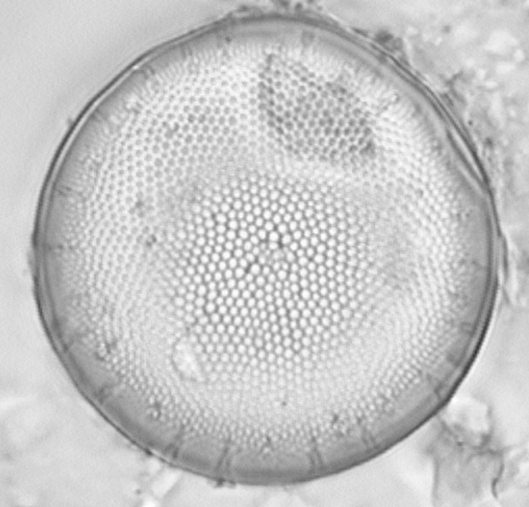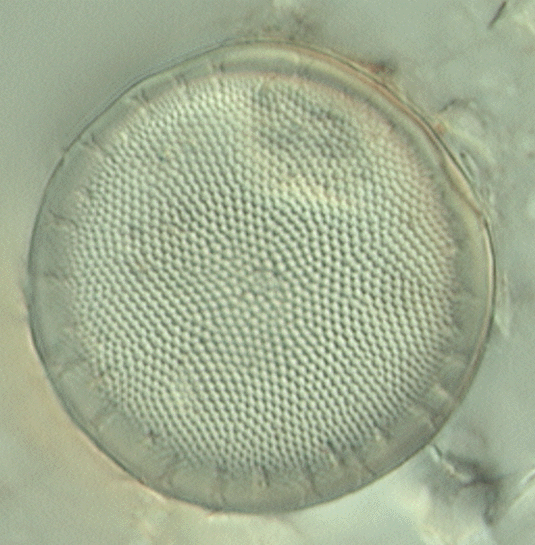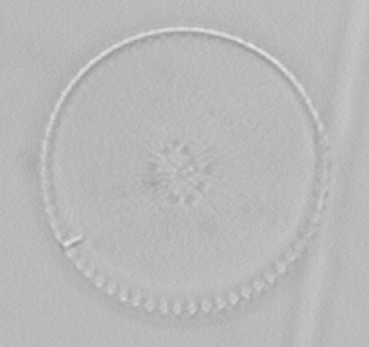The cells are short and cilindrical. They have either concave or convex valve faces. Fine areolae are arranged in sinuous rows of differing lengths. There is a carona of submarginal spines and a single larger spine (or rarely 2 or 3) is just inside the carona. Normally there are 2 to 5 fairly obvious slime poors are arranged around the center of the valve.
(Stoermer and Yang 1969).
Ecological distribution
This species has been found to be a halophilous fresh water form, widely distributed. It has been found ocasionally in water from Lake Michigan subjected to chloride contamination. (Stoermer and Yang 1969).
Synonyms
Thalassiosira fluviatilis Grunow in van Heurck 1883
Micropodiscus weissflogii Hustedt 1926
Coscinodiscus fallax (Meunier 1910) Cleve-Euler 1951, p. 74, fig 126
(Krammer and Lange-Bertalot 1988).(VanLandingham 1978).
Diameter is 12 to 27 micrometers (Stoermer and Yang 1969).
Spines are 14 in 10 micrometers (Stoermer and Yang 1969).
As a frame of refrence here is some information on a different Thalassiosira species which is not found in the Great Lakes.
Collection Lo-1d

 Here are two pictures, one was taken using differential interference contrast
Here are two pictures, one was taken using differential interference contrast
Thalassiosira baltica (Grunow in Cleve et Grunow 1880) Ostenfeld 1901, p. 290
(VanLandingham VII 1978).
This species has a rectangular gurdle view, a slightly slanted mantle and a flat valve face. The face is smaller near the margin and has radial rows of areolae. The mantle has areolae as well but they are smaller than those on the valve face. The mantle has a serrated rim. This species is often found in fairly long chains.
(Hasle 1978).
Ecological distribution
It has been found that salinity is important to this species so it is found only in bracish water. (Hasle 1978).
Diameter is 20 to 120 micrometers (Hasle 1978).
Areolar are 10 to 24 in 10 micrometers (Hasle 1978).
|


Here are two pictures, one was taken using differential interference contrast